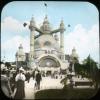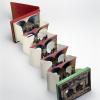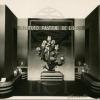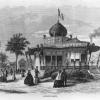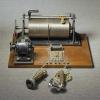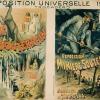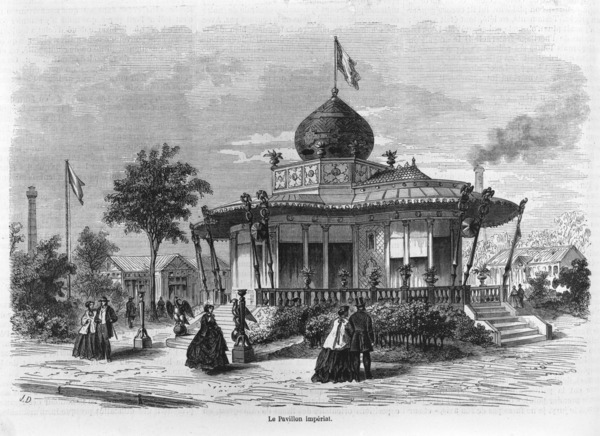Let's make the world as we think it is
The Universal Exhibitions presented the vast and varied outside world to Europeans and Americans, but the real picture sometimes had to be retouched in order to meet the expectations of Westerners. In the second half of the nineteenth century, the industry of the Islamic countries did not have a lot to demonstrate and their exhibits were limited to handicrafts and pieces of arts.
Riding on the wave of fascination with Egyptian art, Islamic architecture, both secular and religious, was presented surprisingly often. The central 'Imperial Pavilion' of the 1867 World Fair in Paris showed decidedly 'Eastern' features, and the Prussians submitted what they called a 'Moorish kiosk'.
Besides such gleaming new buildings, so-called Ottoman or Egyptian villages were reconstructed at the fairgrounds at most of the international expositions during the second half of the 1800s. As some of visitors from the East noted, the walls in the villages were intentionally stained and soiled by constructing teams to give them the appearance that Western spectators would expect.
Following the demands of organizers, the Ottomans erected mosques at the expositions in Paris (1867), Vienna (1873), and Chicago (1893). In the latter, two fake Muslims prayed all day long, and in adjoining Turkish restaurant – which was run by Greeks – American waiters in fezzes served something that could only loosely be described as "Turkish."
 Previous Story
Next Story
Previous Story
Next Story
How to cite this page
Slawomir Lotysz, 'Let's make the world as we think it is', Inventing Europe, http://www.inventingeurope.eu/globalisation/lets-make-the-world-as-we-think-it-is
Sources
- Çelik, Zeynep. Displaying the Orient: Architecture of Islam at Nineteenth-Century World's Fairs. Berkeley: University of California Press, 1992.





